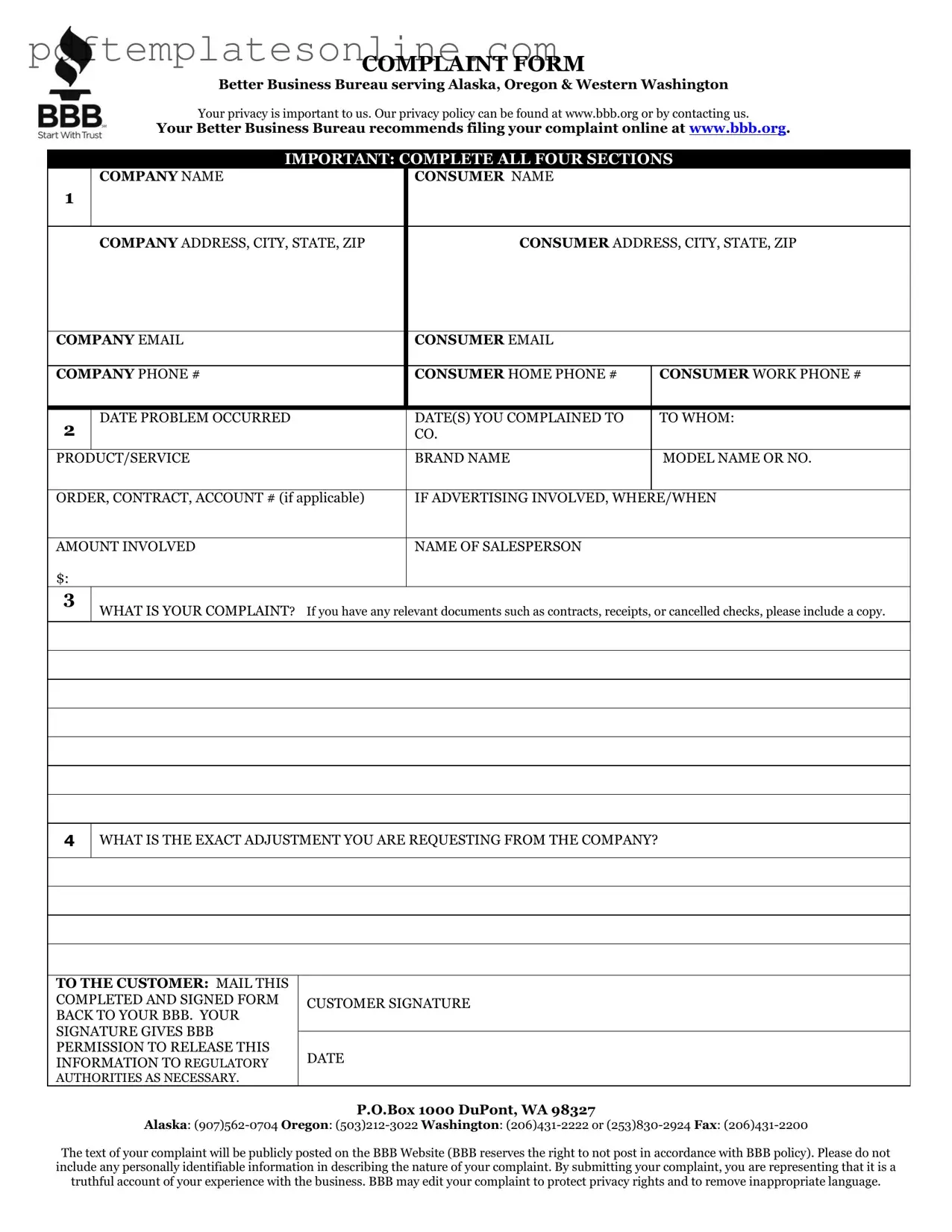Blank Bbb Complaint Form
The BBB Complaint Form is a tool designed for consumers to report unsatisfactory experiences with businesses. By submitting this form, individuals can formally document their grievances and seek resolution. This process not only helps consumers but also encourages businesses to improve their practices.
Access Bbb Complaint Editor Now
